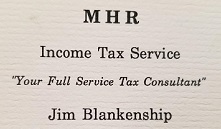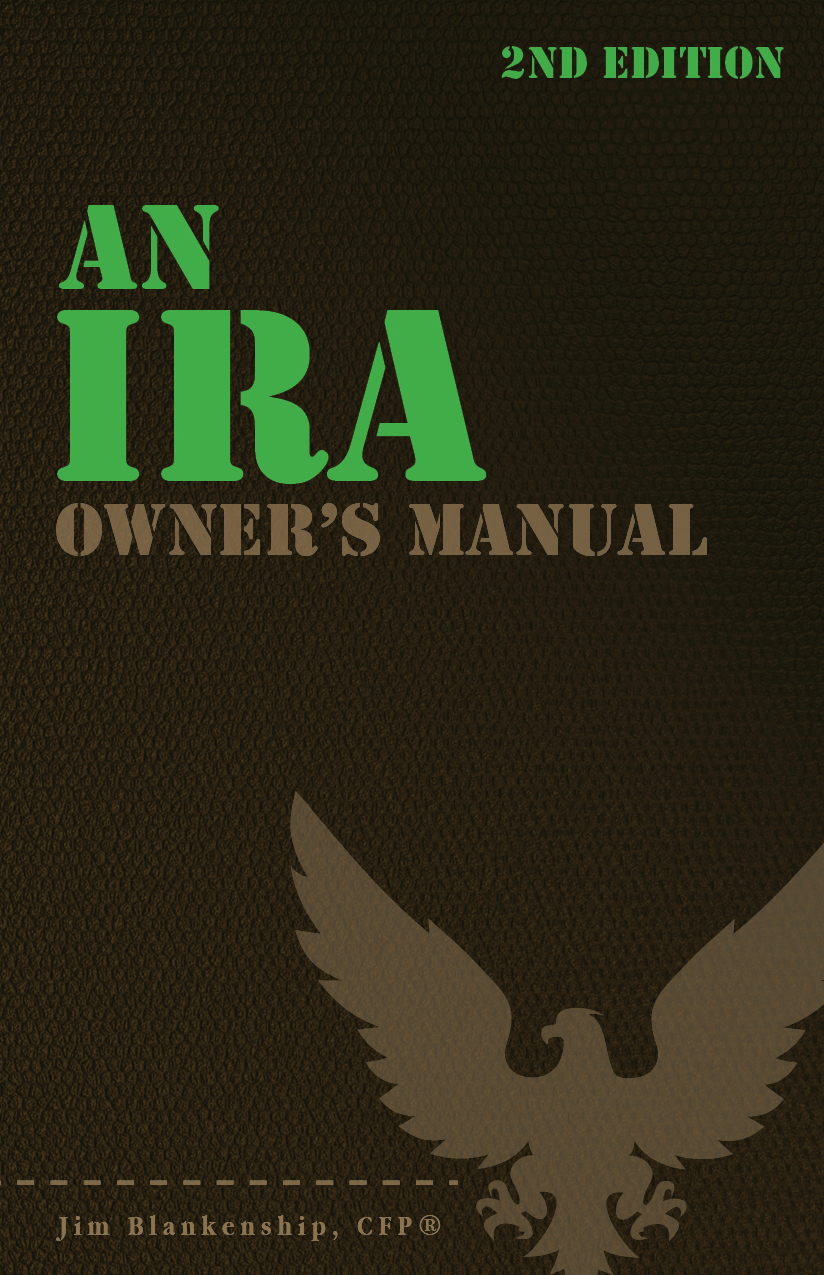
Photo credit: jb
The idea of an IRA rollover, or a rollover IRA, isn’t necessarily a cosmic mystery – this happens all the time. You leave your job, and you rollover your 401(k) to an IRA. No problem, right? Unfortunately, there often are problems with the process of moving funds from one account to another – because there are a couple of very restrictive rules regarding how this process can and cannot be done. It’s not terribly complex, but you’d be surprised how easily these rules can trip you up.
Rollover Risk
Let’s start with a few definitions:
A Rollover is when you take a distribution from one qualified plan or IRA custodian, in the form of a check made out to you, and then you re-deposit that check into another qualified plan or IRA account (at a different custodian).
A Trustee-to-Trustee Transfer (TTT), even though it is often referred to as a “direct rollover”, is treated differently from the Rollover (described above). These transfers, being from one custodian to another (the money never gets into the taxpayer’s hands) is an instantaneous transfer, so the 60-day rule has no bearing on it. Also, the TTT is not restricted to the OPY rule.
The restrictions on a true Rollover (from one IRA to another IRA) are:
- the deposit into the new account must be made no more than 60 days after the distribution from the old custodian; and
- a rollover can only be done once every 365 days (and yes, 366 days if February 29th is included!).
One exception to the “once-per-year” (OPY) rule is that this only applies to IRA-to-IRA rollovers. Rollovers to or from an employer plan (either to or from an IRA or another employer plan) are not subject to the OPY rule. Also, Roth conversion is not subject to the OPY rule as well. This rule allows only one Rollover for ALL IRAs per year. See the article The One-Rollover-Per-Year Rule: Revised for more information.
There are a few situations where an automatic waiver of the OPY rule can be applied:
You qualify for an automatic waiver if all of the following apply:
- The financial institution receives the funds on your behalf before the end of the 60-day rollover period.
- You followed all of the procedures set by the financial institution for depositing the funds into an IRA or other eligible retirement plan within the 60-day rollover period (including giving instructions to deposit the funds into a plan or IRA).
- The funds are not deposited into a plan or IRA within the 60-day rollover period solely because of an error on the part of the financial institution.
- The funds are deposited into a plan or IRA within 1 year from the beginning of the 60-day rollover period.
- It would have been a valid rollover if the financial institution had deposited the funds as instructed.
If you do not qualify for an automatic waiver, you can apply to the IRS for a waiver of the 60-day rollover requirement or use the self-certification procedure to make a late rollover contribution.
Why is this so important? When would you make more than one rollover in a year? One case might be where you were waiting for maturity of certain instruments in one IRA (like a CD, for example) and through the course of less than a year, you had two CDs come due and you took rollover distribution from each in separate checks. The second (and any subsequent) check in the 12 month period would be disallowed and considered a taxable (and most likely penalized) distribution.
Two more rules on rollovers
In addition, the TTT helps to avoid any issues with another rule on rollovers: you are required to rollover the same property that was distributed. This means that the IRA account owner cannot receive cash as a distribution and then rollover stock shares that he’s purchased with the cash. Likewise, you couldn’t receive shares of stock in one company, sell the shares and purchase stock in another company and rollover the new shares. One exception to this rule is that if you receive property from a company plan (like a 401(k)), you can sell the property and rollover the cash into an IRA.
If one of those transactions occurs, your rollover funds are considered excess contributions (above and beyond the annual limit) and you would be subject to 6% excess accumulation tax per year that the funds were in the account, on top of being taxed on the original distribution, and quite likely penalized as well.
The last rule I have to offer is the fact that a non-spouse beneficiary can never do a 60-day rollover; they must always do a TTT – as any check written to a non-spouse beneficiary is considered a taxable distribution, and there is no relief available if this mistake is made.
So a good rule of thumb is this: unless there is a very compelling reason, you should always go with a Trustee-to-Trustee transfer when rolling funds to an IRA – this way you’ll avoid some very unpleasant results. If you have to do the other kind of rollover – make sure you haven’t done another within a year and you’ll be golden.


 After all of the changes that have been put in place for Social Security benefits in the past year, there is still one situation that allows for some planning. Knowing about this situation can help if you happen to be in the right circumstances.
After all of the changes that have been put in place for Social Security benefits in the past year, there is still one situation that allows for some planning. Knowing about this situation can help if you happen to be in the right circumstances.




 e today issued the 2017 optional standard mileage rates used to calculate the deductible costs of operating an automobile for business, charitable, medical or moving purposes. These rates are for use on your 2017 income tax return, filed by April 2018.
e today issued the 2017 optional standard mileage rates used to calculate the deductible costs of operating an automobile for business, charitable, medical or moving purposes. These rates are for use on your 2017 income tax return, filed by April 2018.

 Quick, how do you find out what your balance is at the IRS? Call somebody? Wait for a paper notice? Who knows??
Quick, how do you find out what your balance is at the IRS? Call somebody? Wait for a paper notice? Who knows??
 So – you’ve begun your Series of Substantially Equal Periodic Payments (SOSEPP) from your IRA to satisfy your §72(t) requirement. Allofasudden, something happens that causes you to make a change to your payment – either purposely or through unforeseen circumstances. What happens? You were supposed to keep the same payment for the longer of 5 years or until age 59½. What do you do now?
So – you’ve begun your Series of Substantially Equal Periodic Payments (SOSEPP) from your IRA to satisfy your §72(t) requirement. Allofasudden, something happens that causes you to make a change to your payment – either purposely or through unforeseen circumstances. What happens? You were supposed to keep the same payment for the longer of 5 years or until age 59½. What do you do now?
 tax filing requirements for 2017 is that employers must adhere to an earlier W2 filing date than in years’ past. For 2017,all W2 and W3 (employer records) must be filed with the Social Security Administration by January 31.
tax filing requirements for 2017 is that employers must adhere to an earlier W2 filing date than in years’ past. For 2017,all W2 and W3 (employer records) must be filed with the Social Security Administration by January 31.
 If you delay filing for your Social Security benefit, for each month that you delay you will earn delayed retirement credits. The increase for each month of delayed retirement credit is 2/3% (0.667%) for every month. This equates to 8% in delayed retirement credits for every year of delay. But when are these credits applied to your benefit?
If you delay filing for your Social Security benefit, for each month that you delay you will earn delayed retirement credits. The increase for each month of delayed retirement credit is 2/3% (0.667%) for every month. This equates to 8% in delayed retirement credits for every year of delay. But when are these credits applied to your benefit? We can make a difference in our own lives if we make a simple change in our outlook. If we changed from a hindsight to a foresight perspective, many things about our society could improve dramatically. This foresight can help with retirement planning, marriage, and any major event in our lives.
We can make a difference in our own lives if we make a simple change in our outlook. If we changed from a hindsight to a foresight perspective, many things about our society could improve dramatically. This foresight can help with retirement planning, marriage, and any major event in our lives. The IRS recently published the new contribution limits for various retirement plans for 2017. These limits are indexed to inflation, and as such sometimes they do not increase much year over year, and sometimes they don’t increase at all. This year for the third year in a row we saw virtually no increases contribution amounts, and the income limits increased for slightly as they did for 2016.
The IRS recently published the new contribution limits for various retirement plans for 2017. These limits are indexed to inflation, and as such sometimes they do not increase much year over year, and sometimes they don’t increase at all. This year for the third year in a row we saw virtually no increases contribution amounts, and the income limits increased for slightly as they did for 2016.
 Sterling Raskie, MSFS, CFP®, ChFC®
Sterling Raskie, MSFS, CFP®, ChFC® The latest in our Owner’s Manual series, A 401(k) Owner’s Manual, was published in January 2020 and is available on
The latest in our Owner’s Manual series, A 401(k) Owner’s Manual, was published in January 2020 and is available on  A Medicare Owner’s Manual, is updated with 2020 facts and figures. This manual is available on
A Medicare Owner’s Manual, is updated with 2020 facts and figures. This manual is available on  Social Security for the Suddenly Single can be found on Amazon at
Social Security for the Suddenly Single can be found on Amazon at  Sterling’s first book, Lose Weight Save Money, can be
Sterling’s first book, Lose Weight Save Money, can be  An IRA Owner’s Manual, 2nd Edition is available for purchase on Amazon. Click the link to choose the
An IRA Owner’s Manual, 2nd Edition is available for purchase on Amazon. Click the link to choose the  Jim’s book – A Social Security Owner’s Manual, is now available on Amazon. Click this link for the
Jim’s book – A Social Security Owner’s Manual, is now available on Amazon. Click this link for the  And if you’ve come here to learn about queuing waterfowl, I apologize for the confusion. You may want to discuss your question with Lester, my loyal watchduck and self-proclaimed “advisor’s advisor”.
And if you’ve come here to learn about queuing waterfowl, I apologize for the confusion. You may want to discuss your question with Lester, my loyal watchduck and self-proclaimed “advisor’s advisor”.